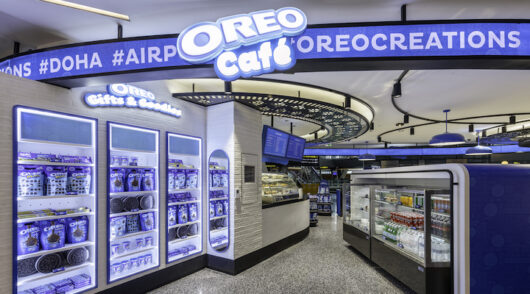In an increasingly tough market, Abercrombie & Fitch has started its fiscal year on a strong note with group sales up by 2.9 per cent and last year’s loss being transformed into a respectable profit.
As a stand-alone set of numbers this is a very solid outcome. However, as it bucks the general direction of the market and stands in marked contrast to the more negative results of many other discretionary retailers, it is an exceptional level of performance.
Why Abercrombie & Fitch has performed where others have not is an important question. At a high level, the answer can be found in the skills and attitude of management. Executives are very focused on the consumer and are ever keen to understand what they want. Once they have discerned this, they know how to go about delivering this in an efficient and effective way. Of course, this is how all retailers should operate; but the blunt truth is that so many have lost the basic skills of retailing and lack the attention to detail in the front end of the business.
Management’s skills are one of the reasons why, over the longer term, Abercrombie has been a retail turnaround success story. The brand today is light years away from its rather tarnished past and continues to attract new shoppers who are interested in its compelling assortments. In merchandise terms, Abercrombie continues to hit the right notes with its elevated casual offer and its range of relaxed styles for men and women. It has also made great strides into growth areas of apparel, such as activewear via its YPB own-brand offer.
Quality is also present with good attention to detail and fabrication, all of which help to justify price points. Being in tune with demand cycles is one of the reasons Abercrombie sales grew by a stellar 13.6 per cent this quarter, off the back of strong numbers in the prior year. We believe the brand will continue to make market and customer share gains.
Hollister sales softer
At Hollister, performance is much softer with sales down by 6.7 per cent off the back of a decline in the prior year. While the numbers are a little disappointing the fact Hollister is more exposed to softer international markets and the challenges of poor exchange rates partly excuses the weaker results. It is also the case that parents pulling back on buying things for kids has taken its toll on Hollister. Nevertheless, improvements are being made to merchandise and the hope is that more compelling assortments in the summer and into the fall will drive some better numbers through the division.
Across the whole business, the bottom line improved significantly this quarter. Last year’s loss of US$16.5 million was translated into $16.6 million of net income. The sales gains helped, but so too did lower costs from reduced freight expenses. This was partially offset by continued inflation in raw material costs. All in all, gross profit expanded by 570 basis points which is a good outcome. Inventory continues to be well managed, and is down by around 20 per cent, which should mean profit erosion through discounting is minimised. This is especially so since the company is nimble with its production meaning it can quickly adapt to trends and focus on items it knows it will sell through.
Looking ahead, we remain positive about Abercrombie & Fitch. While it is true that pressures are building in the retail market, we are not anticipating this to create a complete collapse in consumer demand. Rather it will result in shoppers becoming more selective about what they buy and where they shop.
Fortunately, Abercrombie & Fitch is on the right side of trends which will mean consumers continue to show it favour.
- Neil Saunders is MD at GlobalData.






